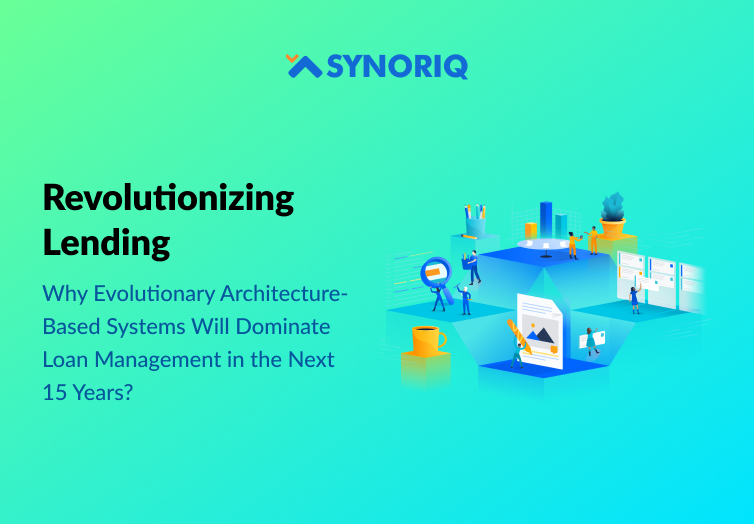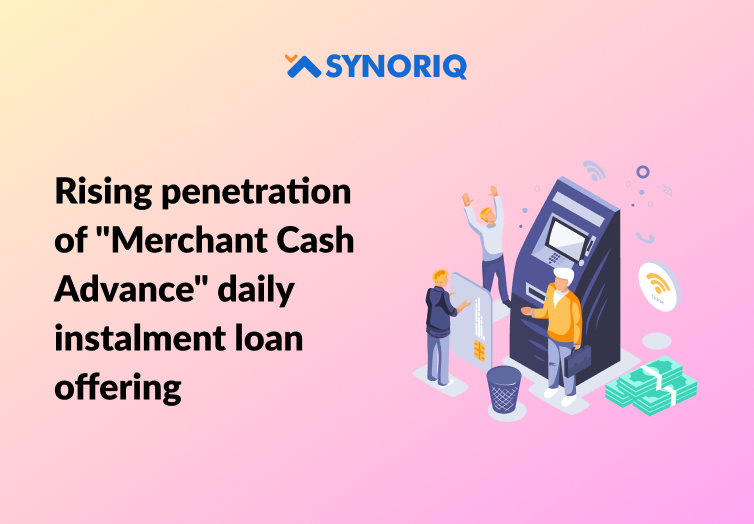All legacy lending softwares at the banks, NBFCs and FinTechs will be replaced in next 15 years with “Evolutionary Architecture” based systems.
This is a strong statement. Why do you say so?
Lets understand the problem first
Its difficult to incorporate changes with changing landscape
- Changes are continuously required in LMS due to evolving loan products, need for automation and regulatory compliances
- Current model of incorporating changes is through lenders writing a BRD document for the change and paying for the change request
- The above model works okay for first 5 years but then the problem of legacy tech starts hitting
- Problem of legacy tech
- Systems age in terms of their underlying tech stack. Its starts getting difficult to maintain legacy systems
- There are several changes specific to the customer built on top of the product, hence upgrading the product gets difficult
- Developers change on the project
- The tech-stack starts getting older. Even compiling the code successfully gets difficult.
- New developers don’t like to work on the old-stack.
- Software providers slow down on changes due the legacy tech.
- Changes become too risky – they have risk of breaking the existing flow too
- Manually testing of the application for thousands of test scenarios gets difficult for every change made
- and ensuring nothing breaks in production is a difficult promise
- Changes become too costly
- For every small change the amount of testing and deployment diligence required and hence the costs
- Systems age in terms of their underlying tech stack. Its starts getting difficult to maintain legacy systems
Limited evolution due to limited ability to think
- In the current landscape – all the thinking job has to be done by the customer themselves
- Product is as good as your ability to think – Each customer is differently positioned in terms of their in-house product’s teams ability to think
- Those who don’t think don’t get any improvements
- Those who think a bit get little bit improvements
- Those who think a lot get more improvements
Upgrades are largely absent OR they take really long if offered
- Most of the software vendors don’t provide product upgrades other than the paid change requests
- If they do then its a long 3 to 12 month long project with enough stability risks
- All their customers are on different versions
- Product upgrades mostly require complete data migration – posing risks of stability
- Product upgrades require long testing and fixing cycles similar to new product installations
- With direct + indirect costs – upgrades turn out to be costly
Bulky avoidable IT costs: leading to lack of competitive advantage
- Total Cost of Ownership is on an average 2X to 3X the application license cost
- (a) Direct cost of licensing of the application +
- (b) Cost of licenses of underlying software packages used – for e.g. database license, server license, licensing for tools etc.
- (c) Costs of Infra
- In the current model, software providers are not incentivised to optimize the infra
- There is usually an over-budgeting of infra to the tune of 2X to 3X of the required infra
- (d) Cost of team to support the infra, security and change management
- An LMS on an average would have 5 to 10 folks on customers payroll just to manage the show
- (e) Direct cost of changes and maintenance charged by the vendor
Unclear responsibilities leading poor service levels
- If system slows down, whose responsibility is this?
- Software vendor would blame it on the infra team and request for infra increase
- Bank would blame the software vendor to optimize the performance
- If something breaks in production then whose responsibility is this?
- Software vendor would expect UAT sign-off from the customer for each change
- Customers would have to put in their own testing mechanisms to provide sign-offs
- If anything goes wrong in production, it would be responsibility of the customer
- If there is a Security breach, whose responsibility is this?
- Software vendor would expect banks to highlight the security observations
- They would fix the observations identified by the banks
- There is no incentive to the software provider to proactively improve security management
How does “Evolutionary Architecture” solve the problems?
Defy the ageing in software world
- Living softwares – Continuous improvements every month
- Always a clear roadmap for product evolution
- Thinking hat is worn by the vendor
- filtering and prioritising the crowd-sourced the ideas
- Product simply evolves on its own with much efforts of customers
- Tech stack upgrades are regularly undertaken by the vendor
Upgrades are seamless with way lower risks
- Softwares on Evolutionary Architecture put strong focus on testing automation
- Thousands of test cases automatically figure out if anything is breaking due to code changes
- Upgrades don’t need customers time and efforts – monthly upgrades are seamless
Lower costs
- Usually “Evolutionary” softwares offer an all-inclusive pricing and hence their is a clear incentive for the vendor to optimise on underlying costs
- They prefer using matured open-source databases and servers to save big time on the third party license costs
- They continuously optimize on infra costs to improve their margins
- They build infra automation to minimise the people costs
Better security
- “Evolutionary Architecture” softwares offer softwares as a service – hence the responsibility is much larger for the vendors
- Vendors in this architecture foresee security breach as a major reputation risk. Hence they invest in better security
- They constantly rollout improvement in security
- Time-to-act for any new identified vulnerability is way much faster due to its underlying evolutionary nature
Better performance
- Due to complete ownership of infra management, evolutionary softwares witness some of the highest loads
- To combat the possible slowness they optimize on their code and infra to offer high performant experience
Better scalability
- Evolutionary softwares are built on micro-services model offering close to unlimited scaling
Lower hassles
- Its far far hassle free for the customers with evolutionary softwares taking up significant responsibilities on their own i.e.
- Change management
- Infra management
- Security management
- Performance management
Ok understood “Evolutionary Architecture” is better, but is it strong enough to make the switch?
Kunal Shah had proposed a Delta 4 theory to predict permanent change in customer behaviour. Reference video https://www.youtube.com/watch?v=4px19xzK7zI
Kunal Shah’s Delta 4 theory posits that a startup’s product or service must be four times better or more efficient than existing solutions to bring about a significant and lasting change in consumer behaviour.
Evolutionary architectures are able to generate a delta 4 difference for the below reasons
- Great product for current needs
- This holds true for Synoriq LMS – its feature richness makes it a great product today
- Future proof – Ensures future improvements so future is in safe hands
- Lesser hassles – outsourced the major hassles – Security, Performance, Infra, Improvements, Compliances
- Lower costs – effective costs including direct+indirect costs is at least 50% lower
About Synoriq’s Evolutionary LMS
At Synoriq, we believe the future of lending isn’t static, it’s alive. That’s why we built our (LMS) on a dynamic core, constantly adapting and improving to keep you ahead of the curve.
Think of it as your lending co-pilot, not just a clunky software.
Here’s why leading NBFCs and FinTechs choose Synoriq:
: Our LMS isn’t just a platform, it’s a living entity. It constantly learns and adapts, ensuring your operations are always future-proof.
: We don’t do feature fatigue. Synoriq’s comprehensive suite caters to every lending need, from term loans to credit lines, colending, subvention, and beyond.
: Dream big, lend big. Synoriq’s robust infrastructure handles any loan volume with ease, so you can focus on growth, not limitations.
: Navigate the ever-changing regulatory landscape with confidence. Synoriq’s LMS stays laser-focused on compliance, giving you peace of mind.
Great user : Forget clunky interfaces and frustrated borrowers. Synoriq champions user-friendliness and mobile-first design, making lending a breeze for everyone.
: Don’t go it alone. Our team of 150+ experts is your lending success partner. From implementation to optimisation, we’re here to guide you every step of the way.
The results speak for themselves:
✅ ,+ AUM serviced: Empowering leading lenders across the spectrum.
✅ + : Trusted by the best in the business.
✅ + : A force of expertise at your fingertips.
At Synoriq, we’re not just building a loan management system, we’re building a better lending landscape.
Ready to join the lending revolution?
- Explore the LMS: https://www.synoriq.com/
- Book a personalized demo: https://www.synoriq.com/#contact
The future of lending tech is bright, and it’s powered by Synoriq.




Leave A Comment